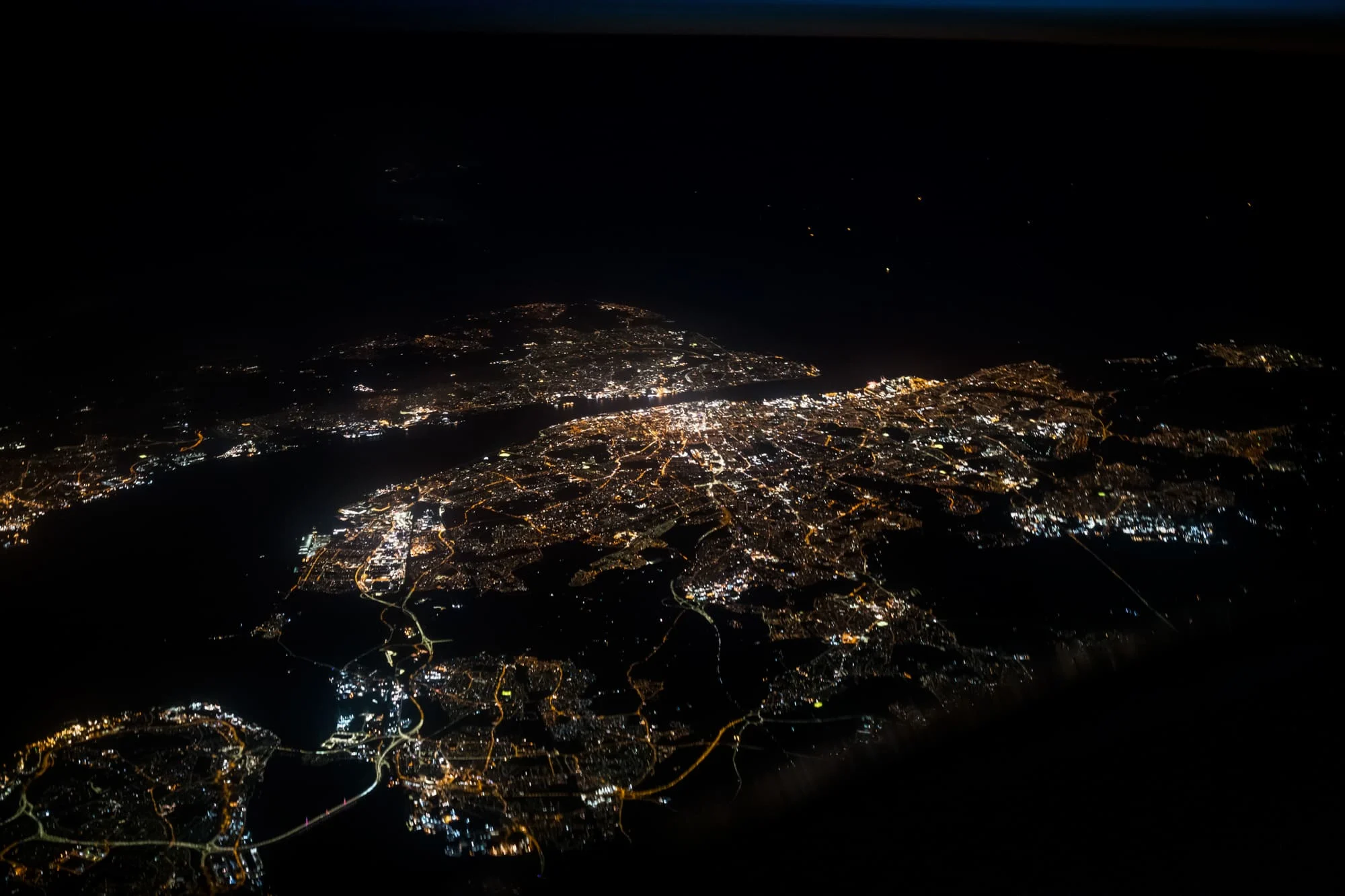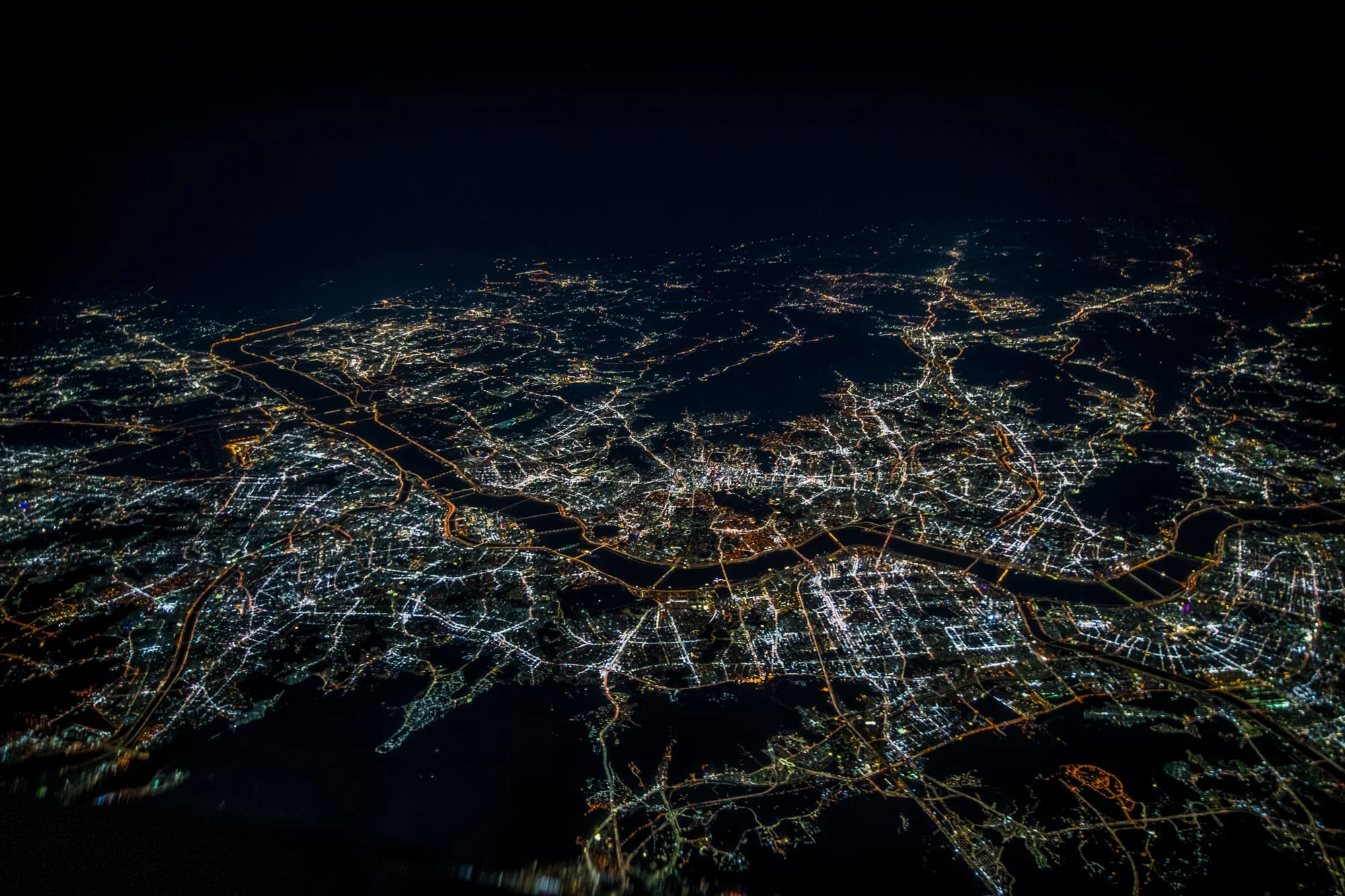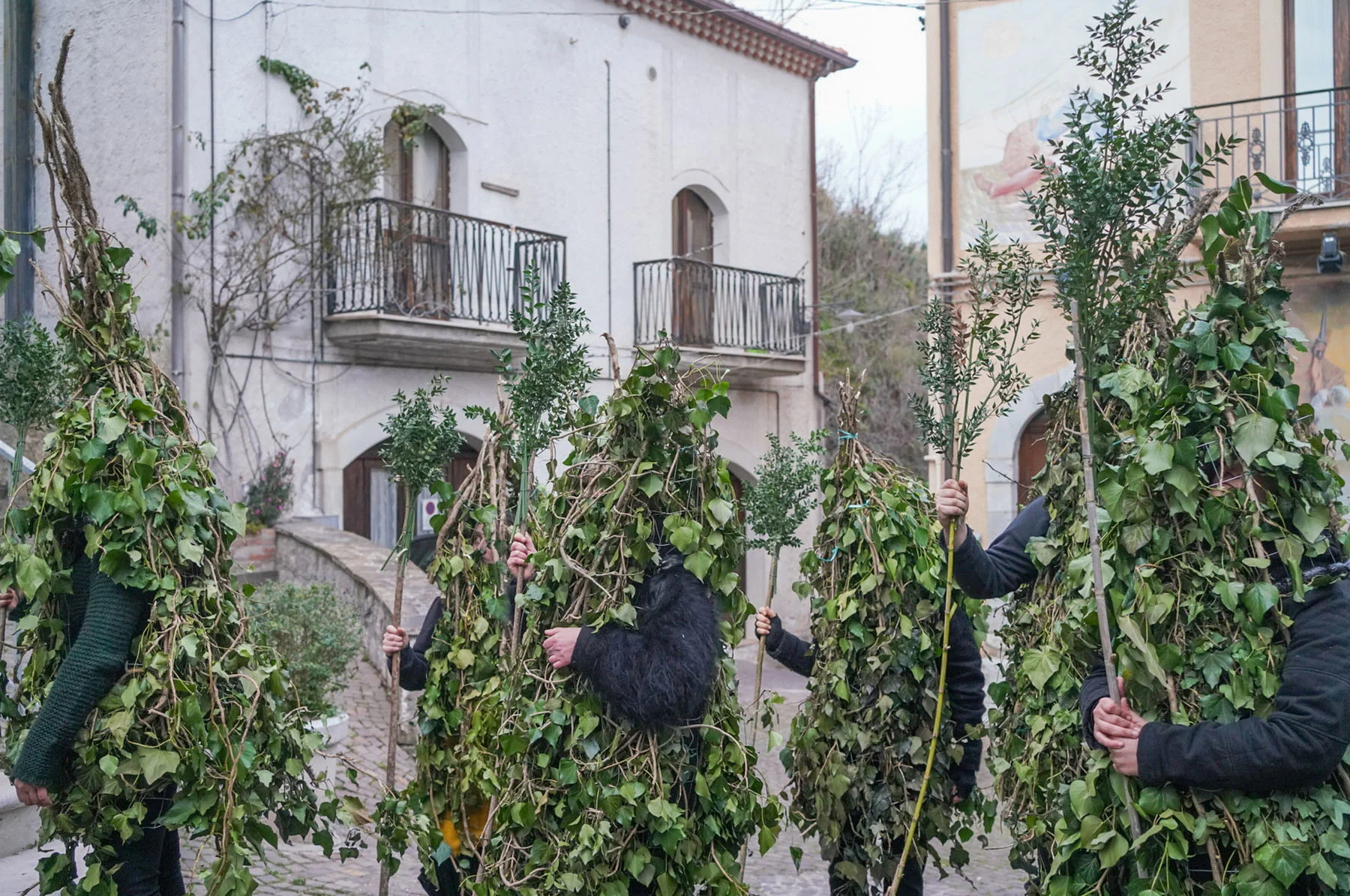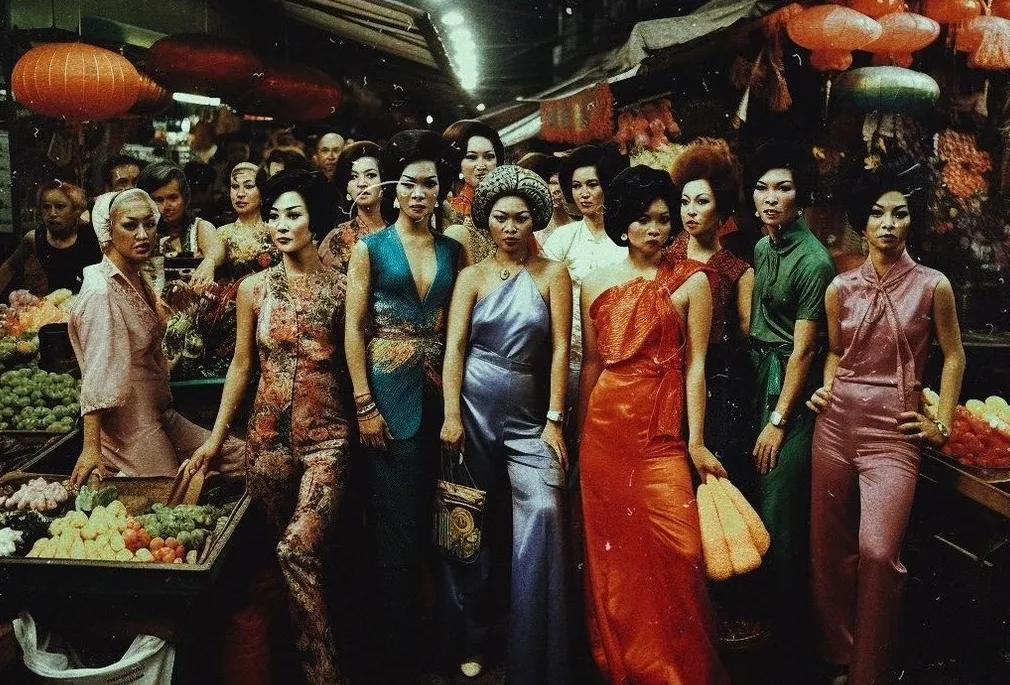
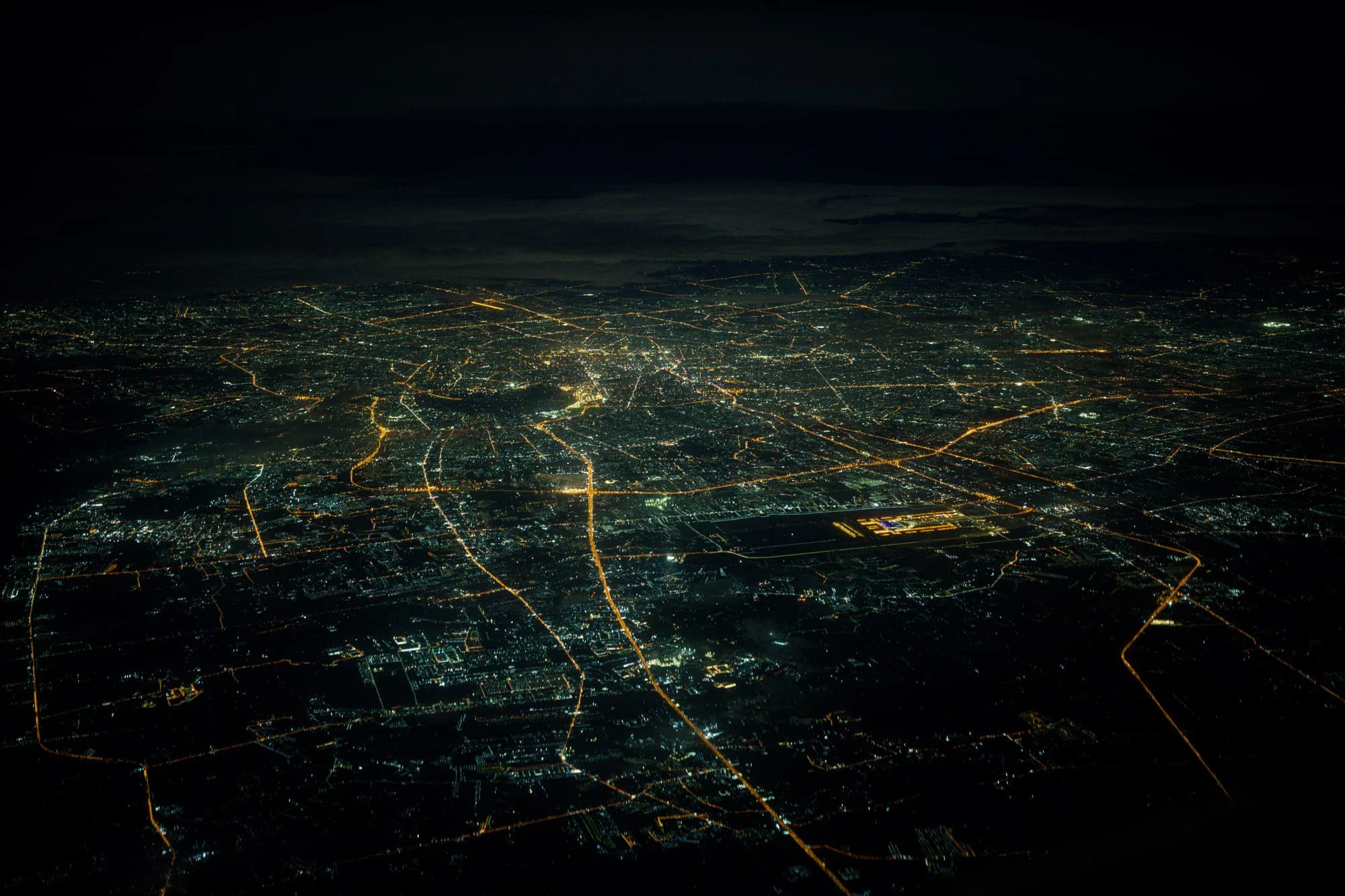
By day, Rico X. is an airline pilot, and by night—well, he’s still an airline pilot, but he also pursues his passion for photography, utilizing the unique perspective of the cockpit to gain a bird's-eye view of cities at night. As he works, our brightly lit planet forces him to consider the rapid growth of consumerism and energy demands, but he also gets to see new cities and societies sprout up and bloom and interact with the natural environment around them. He tells Laura Havlin about this balance between the ominous and the beautiful, and how life looks different from above.
Dubai-based, South-London born airline pilot and photographer Rico X. went straight to pilot school at 18. Now 39, he travels the world through his job, and in his project “Who Left the Bloody Lights On,” he waits for the perfect clear weather conditions, avoids the reflection of the flight controls in the window, all the while dealing with regular turbulence, and captures society from above.
The name started out as a joke, “a line muttered in the cockpit looking down at 3am.” But in those late nights, gazing down at Earth, Rico considers it more profoundly: “We’ve lit the planet like a showroom in parts,” he says. “For example, office buildings we could surely power down at night.” Rico often ponders why so much power needs to be used at these late hours. “But then again, while we sleep, the night economy that supports our whole existence comes to life in the form of deliveries, drivers.”
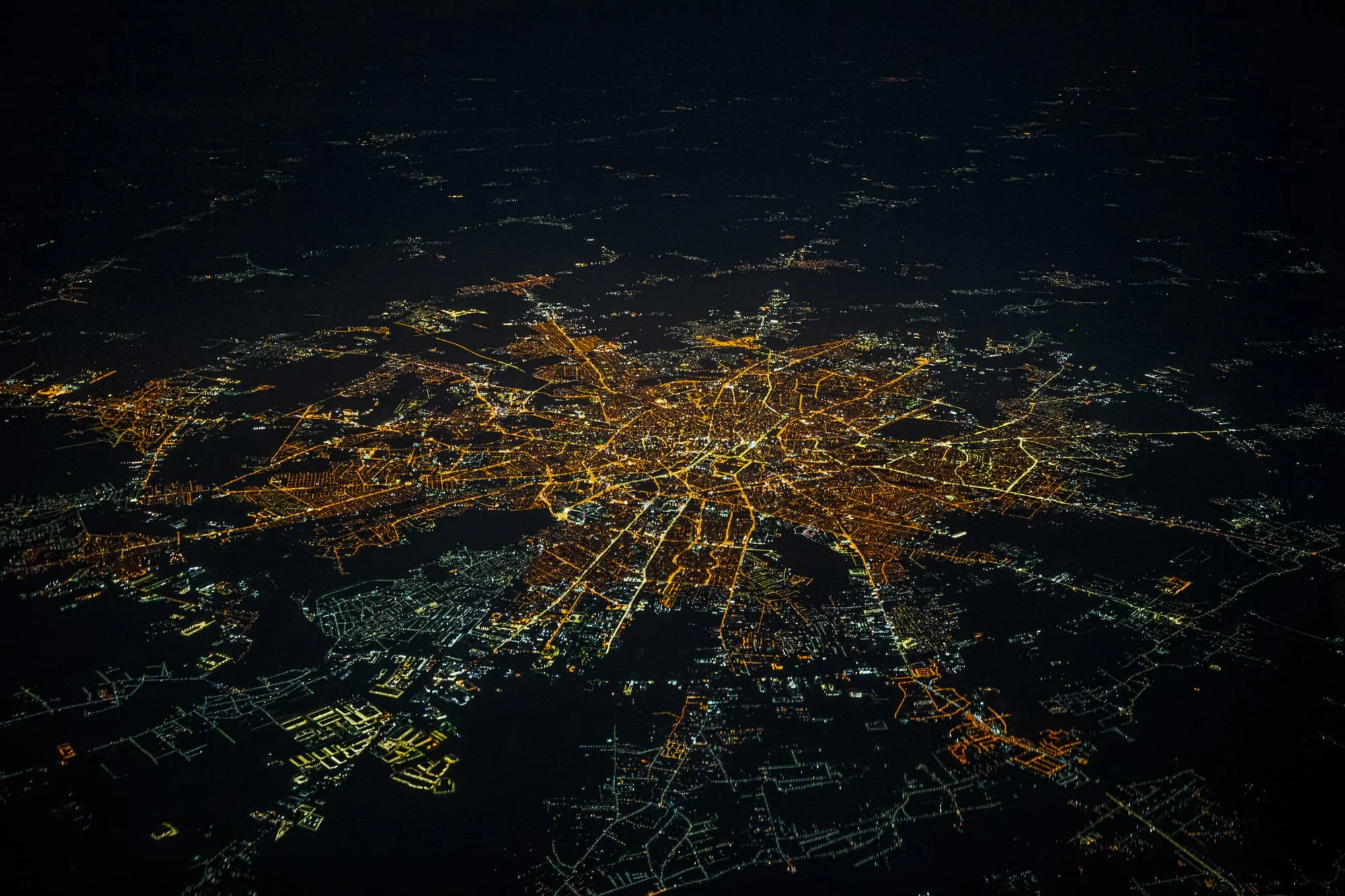
We’ve lit the planet like a showroom in parts.
From his vantage point looking at metropolises down on earth, Rico has seen new cities spring up and spread out “blooming like wild followers, triggering an energetic dance of consumerism and massive energy demands.” He thinks of how the sprawl eats into previously undeveloped natural spaces, and what that might mean for biodiversity. He can see the color-change where cities have prioritized more efficient LED-style bulbs (which give a cooler glow than the older style orange hue) and he thinks of all those people who have “left the bloody lights on,” and then of the service workers operating during the night to meet the “turbo boost” in demand on goods and services for these hubs.
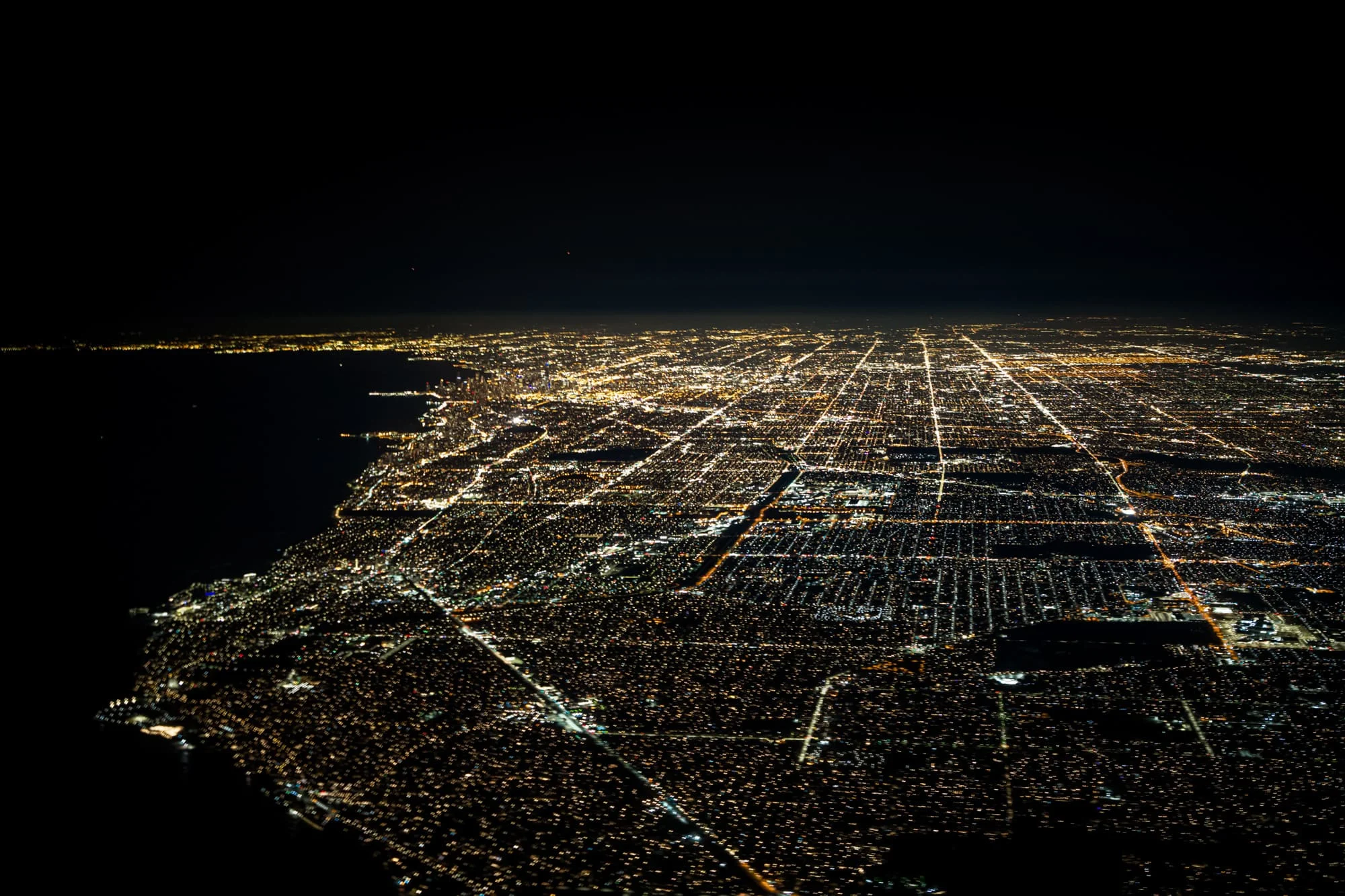
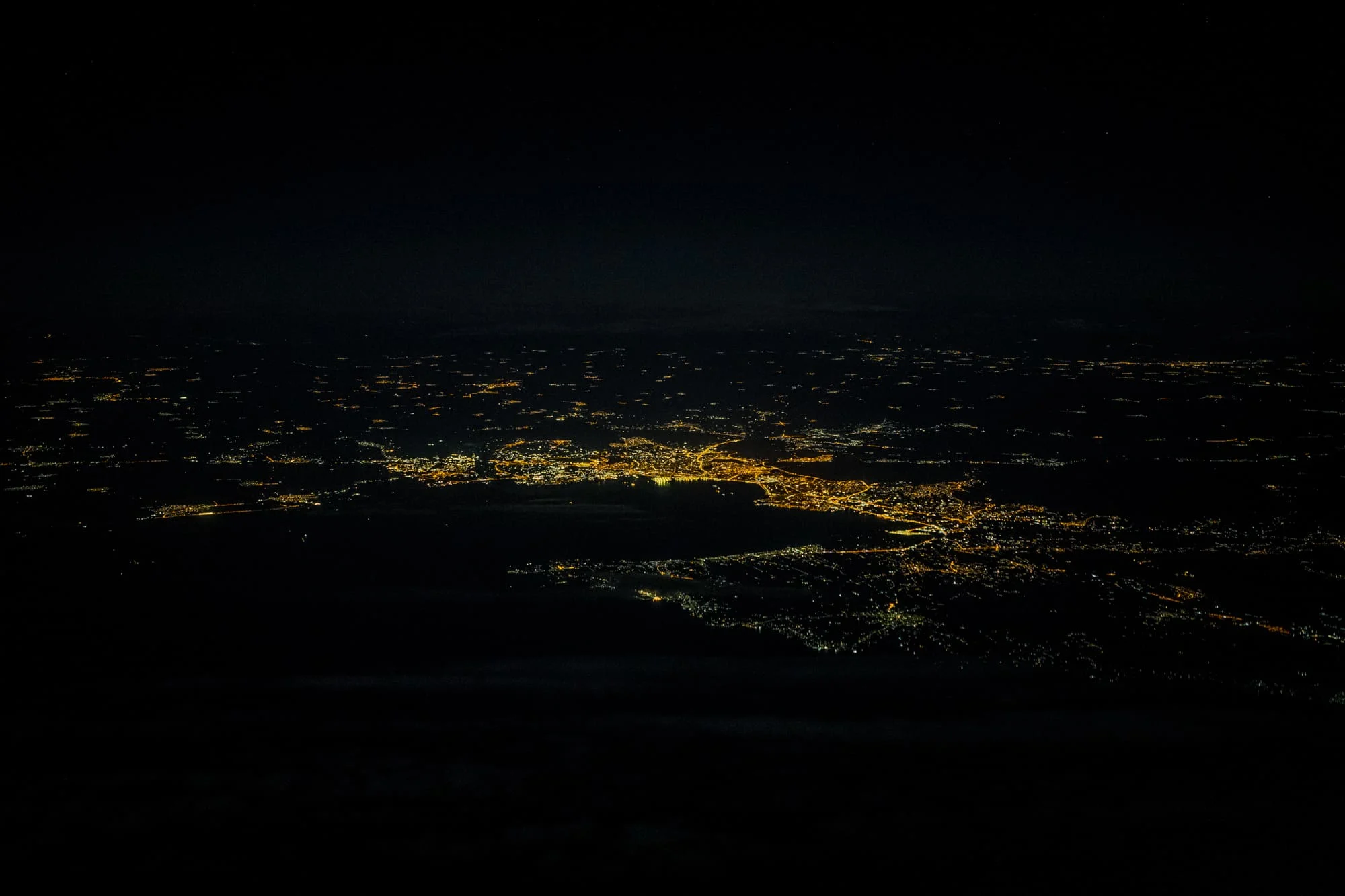
Between these well-lit cities, Rico’s also struck by how clustered populations tend to be, having seen so much of the planet powered down where there is virtually nothing: “There are great expanses where you can fly for hours and there is only darkness,” he says, “like crossing parts of Africa, Asia, Central Australia across the GAFA—which is slang for “Great Australian Fu*k All”—hours of nothingness, just like parts of Northern Canada.”
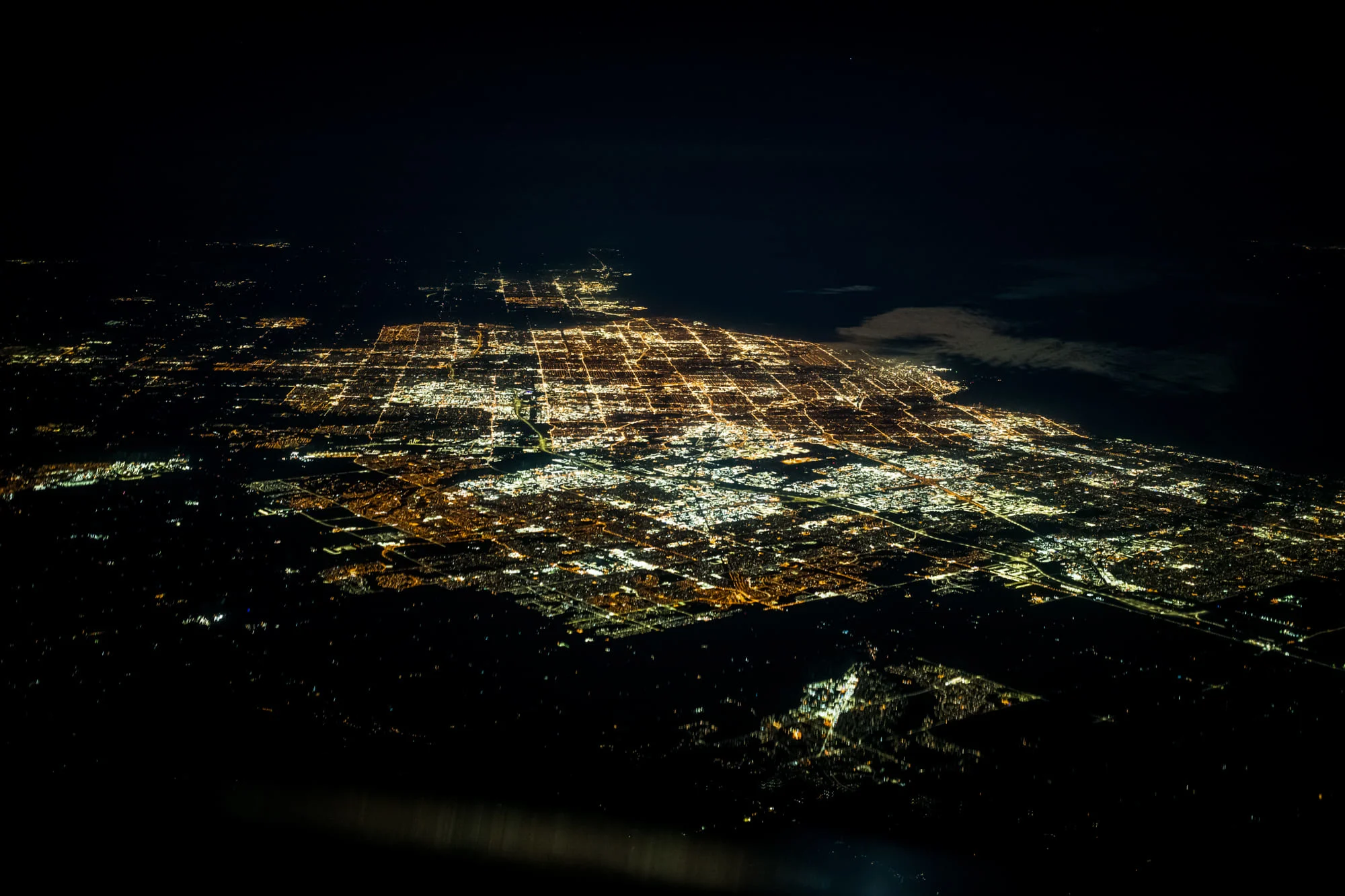
You see cities blooming like wild followers, triggering an energetic dance of consumerism and massive energy demands.
Viewed as a collection, these cityscapes show each city’s unique patina, from the neat geometric grid systems of the United States—and the parts of the Middle East which replicated it under US influence during their construction—to hubs of activity before the sudden shift into blackness where mountains circle the city like Muscat. Through the darkness the lights become maps of how influences have shaped the development of a city, whether the inhospitable landscape halting city expansion at defined edges, like in the case of Oman’s famous mountains, or the cost of building and limited space that has meant Hong Kong’s density pushes upwards rather than outwards. “I like passing over Oman because there’s a little area that’s just black because of the mountains,” says Rico.
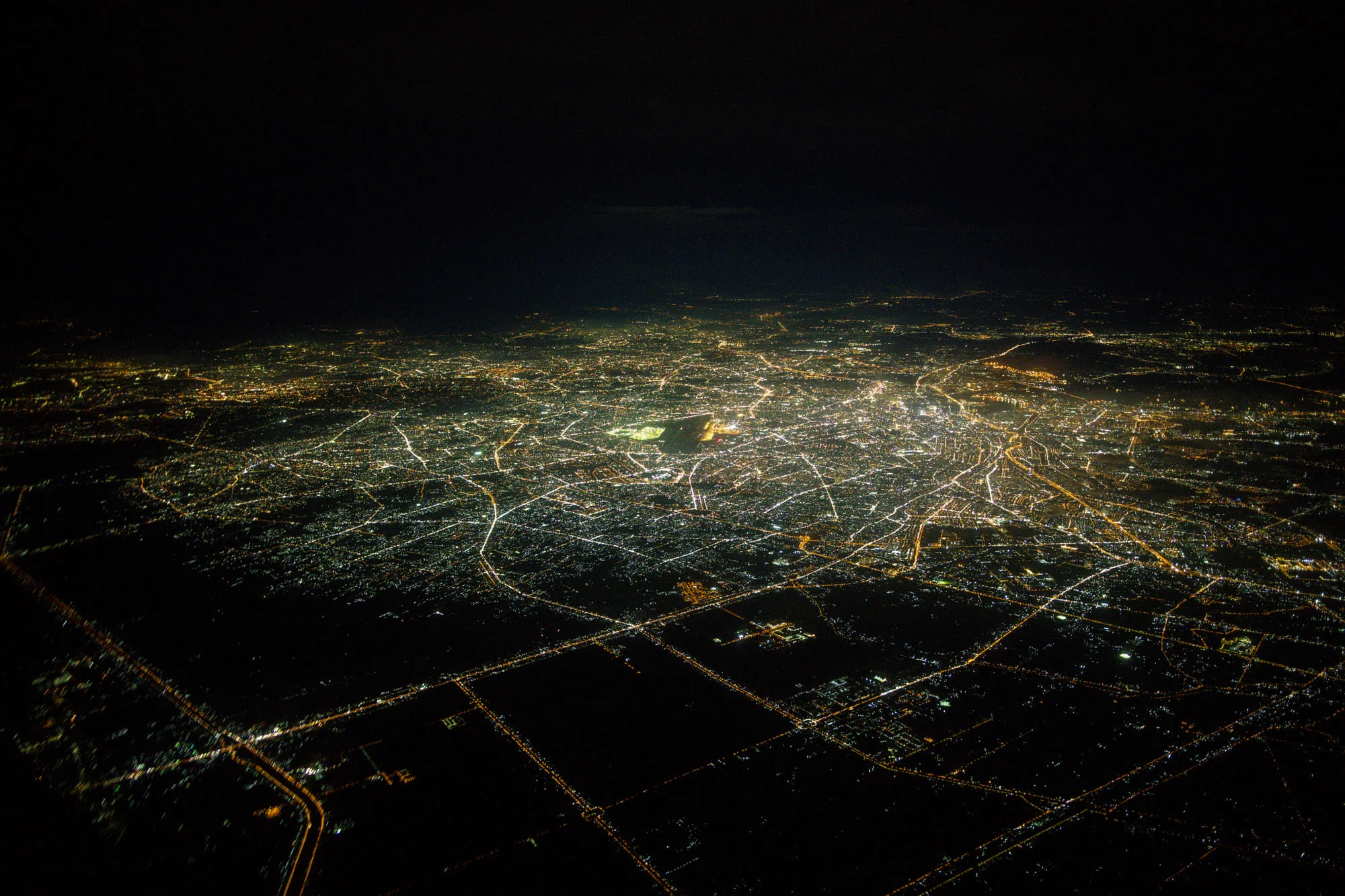
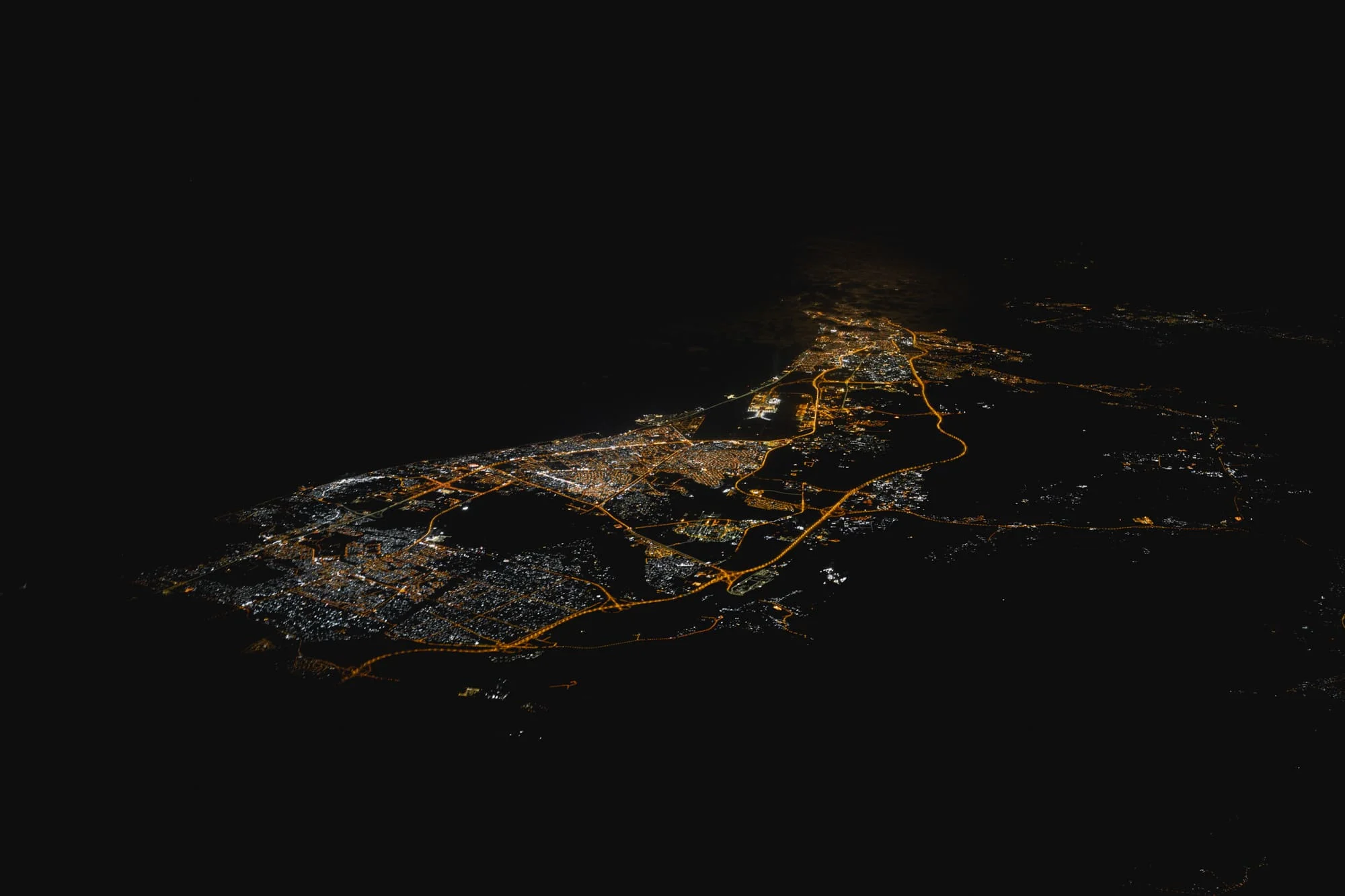
The day job allows Rico to self-fund his personal work, giving him the luxury of truly immersing himself in a subject, revisiting over years to develop a nuanced and authentic picture, free from the influence of what’s commercially viable. These projects share a common thread, documenting Black and Brown communities, an attempt, he says, to redress how the photographic gaze has depicted such figures throughout the history of photography. He’s also joined Kamoinge, the legendary Black photography collective, as one of the first non-US-based members. Through this, he gets to learn from the likes of Magnum Photos member Eli Reed, as well as Jamel Shabazz, Lola Flash and Adger Cowans. “It's been cool getting to know them, just hearing from all the old voices seeing all the old work,” he says “learning as much as I can.”
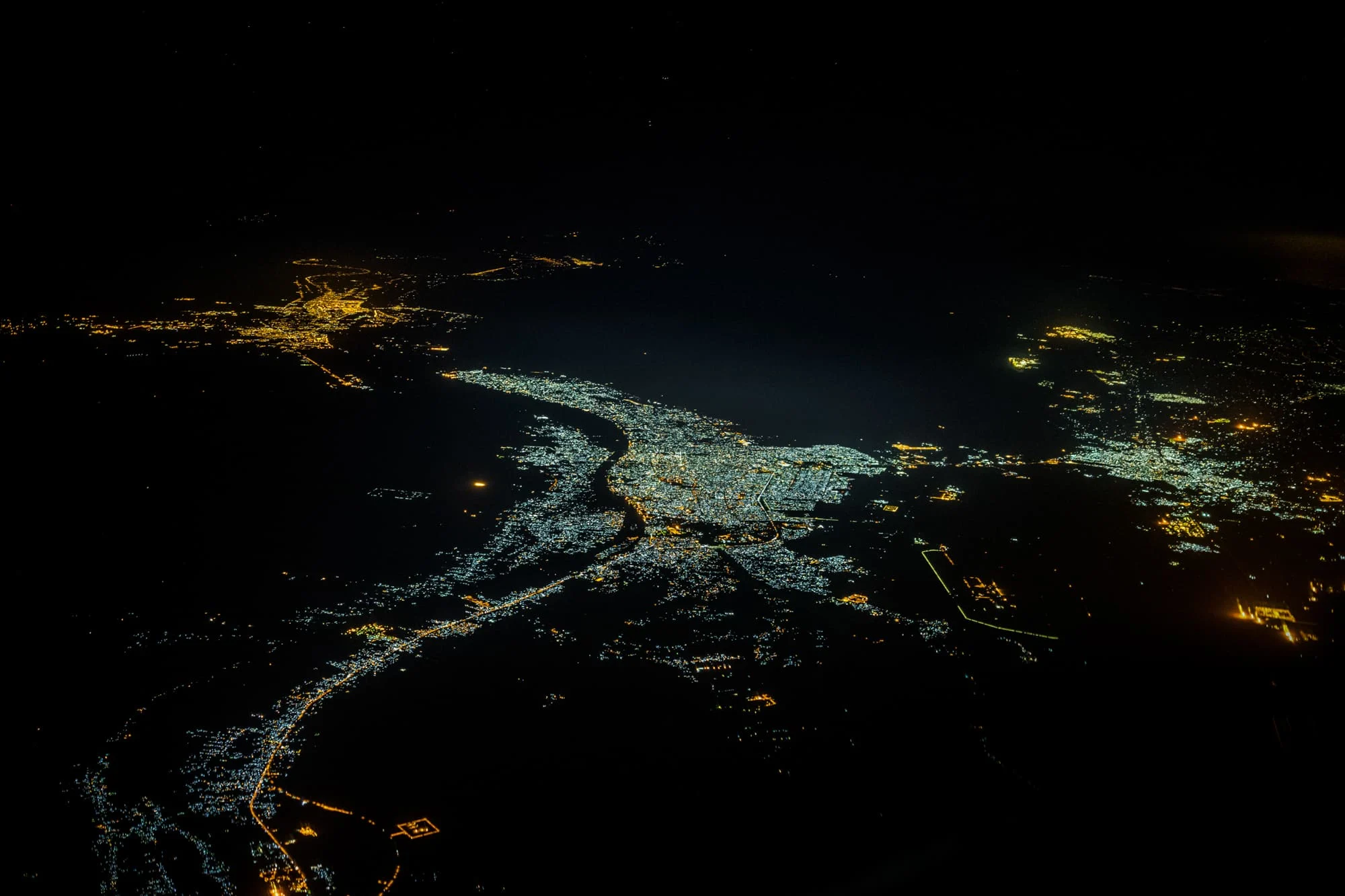
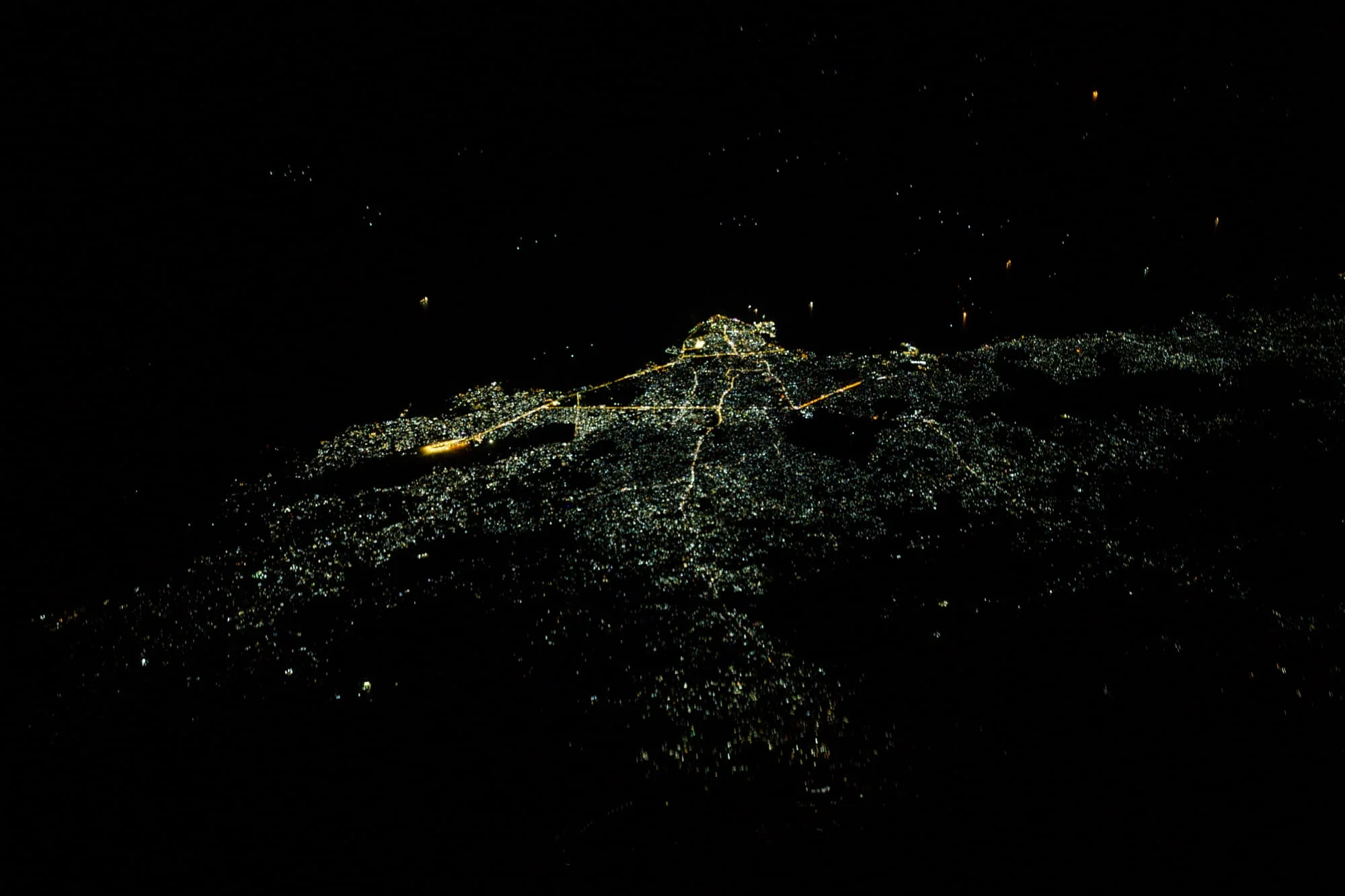
It’s oddly beautiful and a bit ominous; like watching ambition and growth from above.
Eventually, Rico would like to get to all major cities in the world, putting in requests to do flights to expand his coverage. For those worried about who's flying the plane while he’s snapping, Rico reassures us that there are always a minimum of two, and up to four of them up there, and he doesn’t get his camera out during high workloads or key moments like descent into landing. “From up high, cities look like living circuits, pulsing, expanding, sometimes elegant, sometimes chaotic,” says Rico. “In some parts of the world, the lights pour outward into the dark like spilled ink like in Basra and Zanzibar, or clinging to waterways reminding us of the bygone era where the water was the epicenter of trade like in Seoul, Liverpool or Khartoum. Elsewhere, you can see cities forced to bend and snake around terrain, parks or lakes like in Birmingham or Tehran. It’s oddly beautiful and a bit ominous; like watching ambition and growth from above.”
